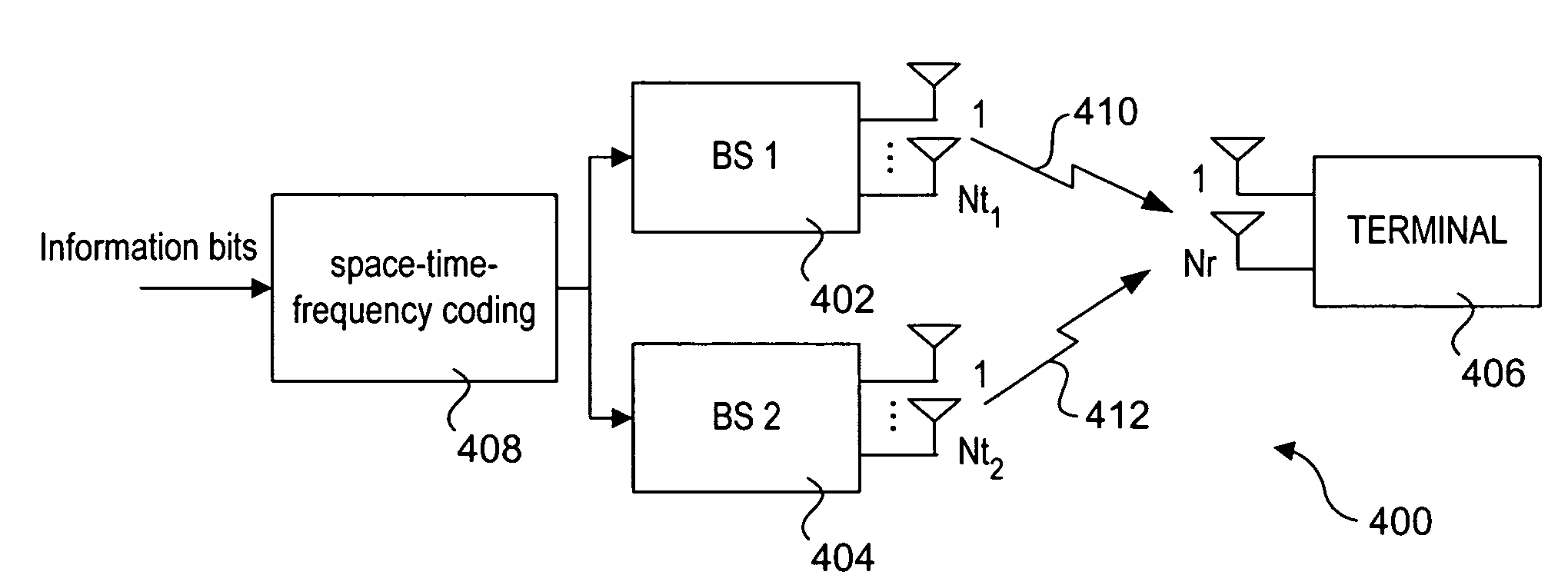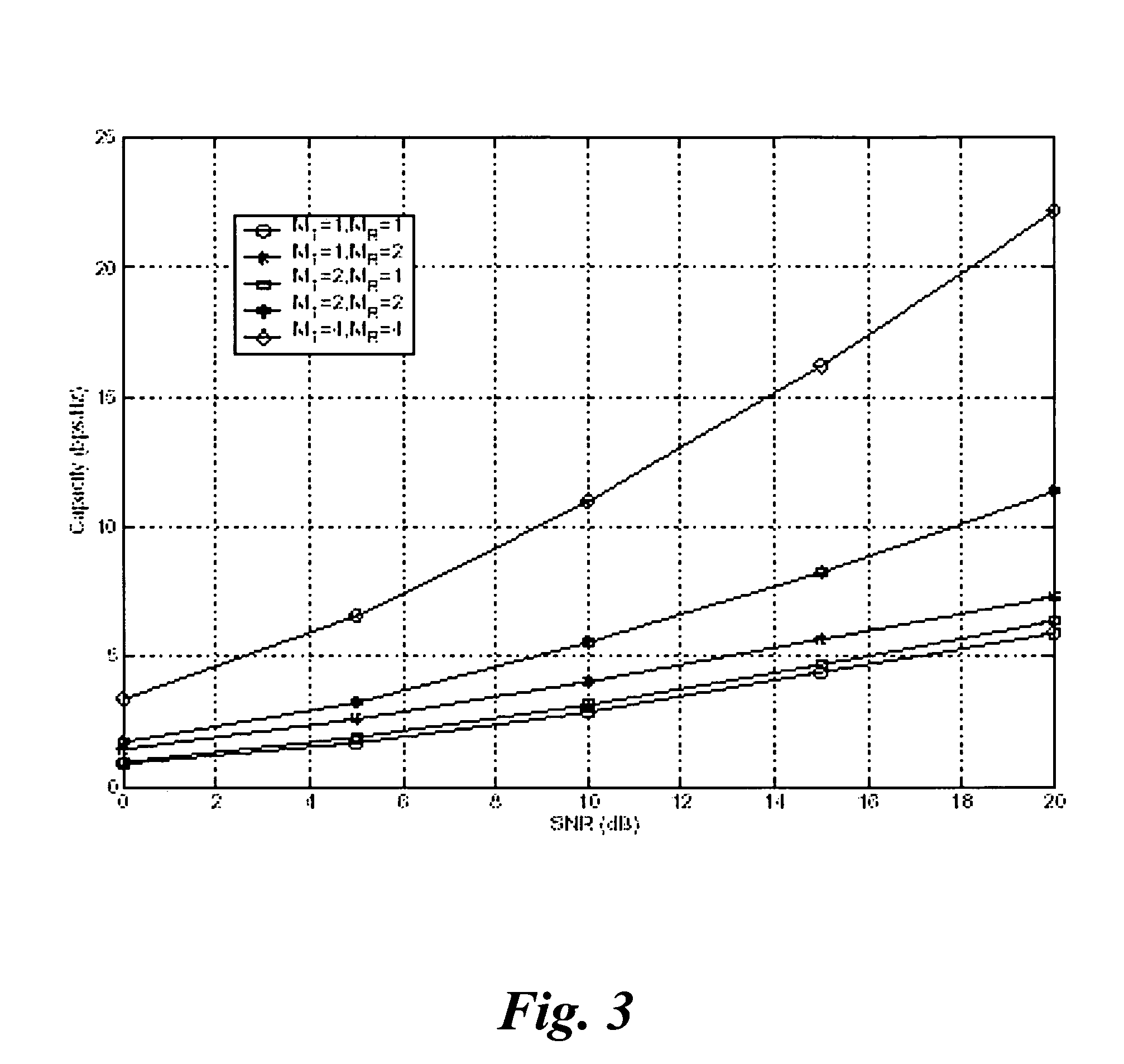Cooperative MIMO in multicell wireless networks
a multi-cell wireless network and wireless network technology, applied in the field of communication systems, can solve the problems of difficult to achieve reliable wireless transmission, time-varying multipath fading, and difficulty in increasing the quality or reducing the effective error rate of multipath fading channels, and achieve the necessary improvement of srn. the effect of increasing the transmit power or additional bandwidth
- Summary
- Abstract
- Description
- Claims
- Application Information
AI Technical Summary
Benefits of technology
Problems solved by technology
Method used
Image
Examples
Embodiment Construction
[0028]In accordance with aspects of the present invention, a method and apparatus to augment antenna elements from two or more base-stations / terminals to perform higher dimensional MIMO operations is disclosed. In one implementation, MIMO / joint space-time coding is employed across multiple base stations in a cellular environment, wherein the cooperative transmission of signals is performed at the modulation and coding level. This novel approach introduces additional diversities and capacities to existing network components with minimal additional costs. Because of the increase in the number of transmit antennas, the number of simultaneous users increases, leading to better spectrum efficiency.
[0029]In the following description, numerous details are set forth to provide a more thorough explanation of the present invention. It will be apparent, however, to one skilled in the art, that the present invention may be practiced without these specific details. In other instances, well-known...
PUM
 Login to View More
Login to View More Abstract
Description
Claims
Application Information
 Login to View More
Login to View More - R&D
- Intellectual Property
- Life Sciences
- Materials
- Tech Scout
- Unparalleled Data Quality
- Higher Quality Content
- 60% Fewer Hallucinations
Browse by: Latest US Patents, China's latest patents, Technical Efficacy Thesaurus, Application Domain, Technology Topic, Popular Technical Reports.
© 2025 PatSnap. All rights reserved.Legal|Privacy policy|Modern Slavery Act Transparency Statement|Sitemap|About US| Contact US: help@patsnap.com



